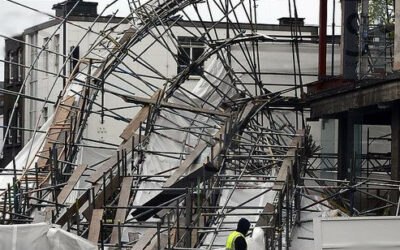Liability for defective workmanship is one of the top 10 risks identified by Kiwi builders. Additionally, recent BRANZ research shows that 86% of homeowners had to call their tradies back to remediate defects (many of these are likely to be minor however).
Minimising the Risk
Builtin recommends builders follow a consistent process to minimise the risk of defects, including checklists for staff on site. Here are five practices that the best operators are following for every job:
- Use only trusted sub-contractors and brief them well
- Clearly defined scope of work, quality standards and materials specification
- Obtain detailed work plans and schedules from subbies
- Regular quality assurance checking & site supervision
- Good communication channels between all parties (eg. expectations and issue reporting)
Insuring the Risk
There are three types of defective workmanship insurance available. This cover is part of a public/general liability policy, will differ by insurer and may be an optional cover that you have to add.
1. Property Being Worked On
If your cover is with a direct insurer you may have this, or you may have to ask for it to be added. An example of the wording:
You are insured for your legal liability for damage to property that you are working on, including the cost of rectifying any work undertaken by you or on your behalf.
The damage usually must happen while you are working on it.
No physical damage = no claim. If you own the damaged property = no claim.
2. Defective workmanship cover that first requires property damage to trigger a claim
This is usually included with policies arranged through insurance brokers but may also be optional. An example of the wording:
You are insured for property damage:
a) to property owned by a third party and that you are or have been working on
b) for the cost of repairing, correcting, removing, or replacing work which is found to be defective after it has been completed and handed over
There has to be physical property damage to a third party’s property before you can make a claim. The work must have been completed and handed over to the client before the defects become known.
No physical damage = no claim. If you own the damaged property = no claim.
3. Defective workmanship cover that does not require property damage to trigger a claim
This is generally only available with policies arranged through insurance brokers and may also be optional. An example of the wording:
a) You are insured for property damage to property that you are or have been working on.
b) You are insured for the cost of remediating your product which is proven to be faulty or defective.
With this type there does not have to be physical property damage before you can make a claim to fix the defective workmanship.
The work must have been completed and handed over to the client before the defects become known.
If you own the damaged property = no claim.
In a Nutshell
Defective work is one of the most costly risks builders face. Even if the call back is for a minor issue this can impact on the job’s profitability because of the extra labour hours required returning to the site. As well as potentially missing out on a valuable testimonial and referral source if the customer is not happy. By following some basic practices consistently these issues can be significantly reduced. Should a major problem arise making sure you have the appropriate insurance to suit your business can be the difference between it being covered or not.
Note:
Liability policies are complicated and there could be other reasons for a claim being declined. Certain trades for instance will have limitations imposed and all policies exclude claims related to external water penetration or moisture ingress due to a failure to meet the Building Code for example. Read more about this in our post on the topic: https://builtininsurance.co.nz/be-aware-of-the-building-defects-exclusion




